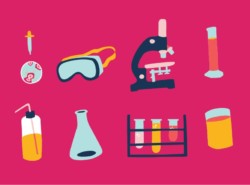
Digitising breast cancer screening
Published: 10/7/19 11:23 PM

Daniel Schmidt
Early detection increases the likelihood of breast cancer survival. Whilst population-based breast screening provides the best chance of early detection, it doesn’t provide all women the same level of detection.
Unbeknownst to many women, the density of their breast tissue can impact on the ability of mammograms to detect breast cancer. Breasts that are defined as high density are largely made up of glandular and connective tissue, while low density breasts are mostly composed of fatty tissue.
On a mammogram, the white sections indicate dense breast tissue. Tumours also show up as white and can be obscured if a woman has dense breast tissue. Despite being one of the strongest predictors of breast cancer risk, better screening methods are needed for mammographic density. Current methods of measuring mammographic density are subjective and qualitative, relying on the interpretation of radiologists which makes it impractical for clinical use and increases the risk of tumours going undetected.
An automated procedure that determines which aspects of a mammogram best predict cancer would allow screening programs to identify and target women at higher risk. This, in turn, could lead to earlier diagnoses and better breast cancer outcomes.
To tackle this, NBCF-funded Dr Daniel Schmidt and his research team will build on existing digital mammography technology, such as the state-of-the-art Volpara software, to develop an automated measure of breast cancer risk from a woman’s mammogram. Given this study is using the data created by Volpara, implemented worldwide as a credible breast cancer screening method, it has a very high potential to revolutionise screening methods and improve early detection for women with dense breasts.